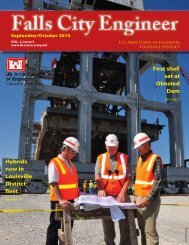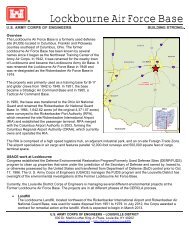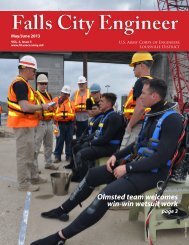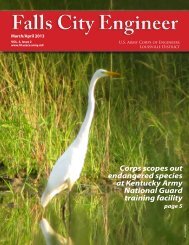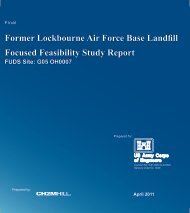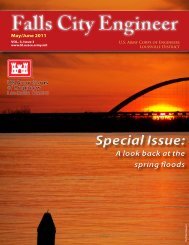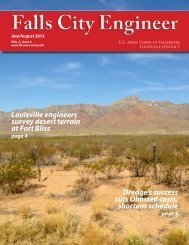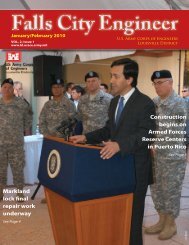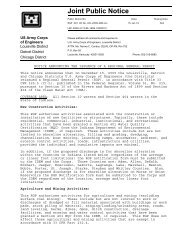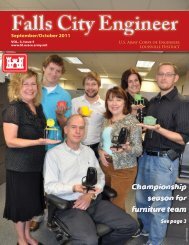Army Reserve Design Process & Submittal Requirements Part C ...
Army Reserve Design Process & Submittal Requirements Part C ...
Army Reserve Design Process & Submittal Requirements Part C ...
Create successful ePaper yourself
Turn your PDF publications into a flip-book with our unique Google optimized e-Paper software.
Page 6Proposed changes to the BIM dataset must be received, evaluated, and judged without slowingthe design process. Therefore we have developed a submittal process for changes to the CADDand BIM standards during the design phase. For change submittal, visit thehttps://tsc.wes.army.mil/comments/AECSDS_comments/AECSDS-CommentForm.asp website.Once there, follow all instructions and submittal requirements. The design team should make theneeded change, submit the change, and go on with the design as if it had been accepted.However, the design team must be willing to reverse or alter their model if their submitted changeis not accepted to standard.<strong>Design</strong>ers, both AE and In-House, will perform Quality Control (QC) checks of the dataset justprior to each submittal. Documentation created during those checks shall be submitted at the timeof the project submittal BIM Data Report. Any elements within the model not meeting therequirements shall have an explanation of the reason that they were left as they were. Theseissues should be brought to the attention of the LRL BIM Manager for consideration of standardsupdating at the dataset review meeting. There are four types of checks that must be made on themodel:1. Visual Check – This can be accomplished by checking the model small segments at atime using cameras within MicroStation or the entire model using Bentley Navigator.The main reason for this check is to insure the design intent has been followed and thatthere are no unintended elements in the model.2. Interference Check – This check is performed using Bentley Navigator together withBentley’s Interference Manager. It is used to locate problems in the model where twoobjects are occupying the same physical space.3. Standards Check – This is performed using the “standards checker” tool within theBentley software. This is used to insure that the fonts, dimensions, line styles, levels andother issues are followed per the BIM and CADD standards.4. TriForma Element Validation – Using the validation tool on the datagroup dialogue willrun this tool and it is used to insure that the dataset has no undefined or incorrectlydefined elements.At the time of delivery of each design submittal, the design team will make arrangements for adataset review meeting with the LRL BIM Manager. This meeting is intended to communicatechanges and additions to the US <strong>Army</strong> <strong>Reserve</strong> Center BIM Dataset. This will enable the BIMmanager to determine what elements should be considered for inclusion to the US <strong>Army</strong> <strong>Reserve</strong>Center BIM Dataset future releases. This meeting will also give the AE an opportunity to suggestchanges to the process, workspace, standards, or dataset. This meeting will be coordinatedthrough the Project Manager.Each delivered design submittal will be reviewed for quality assurance (QA) as explained in theQC/QA <strong>Process</strong>es for Study/<strong>Design</strong> Phase. In addition, BIM files delivered with each submittalwill be evaluated for differences from the default dataset folders and files to determine if theproper files within the dataset have been edited. The LRL BIM manager will also do QA of thesubmitted BIM files to insure that the QC was properly performed.The results of these sources of change will be evaluated by the Louisville District BIM managerwho will select only relevant and quality data to be used for enhancement of the US <strong>Army</strong><strong>Reserve</strong> Center BIM Dataset.1 April 2007 Version <strong>Army</strong> <strong>Reserve</strong> DPSR Manual -- Appendix 1



